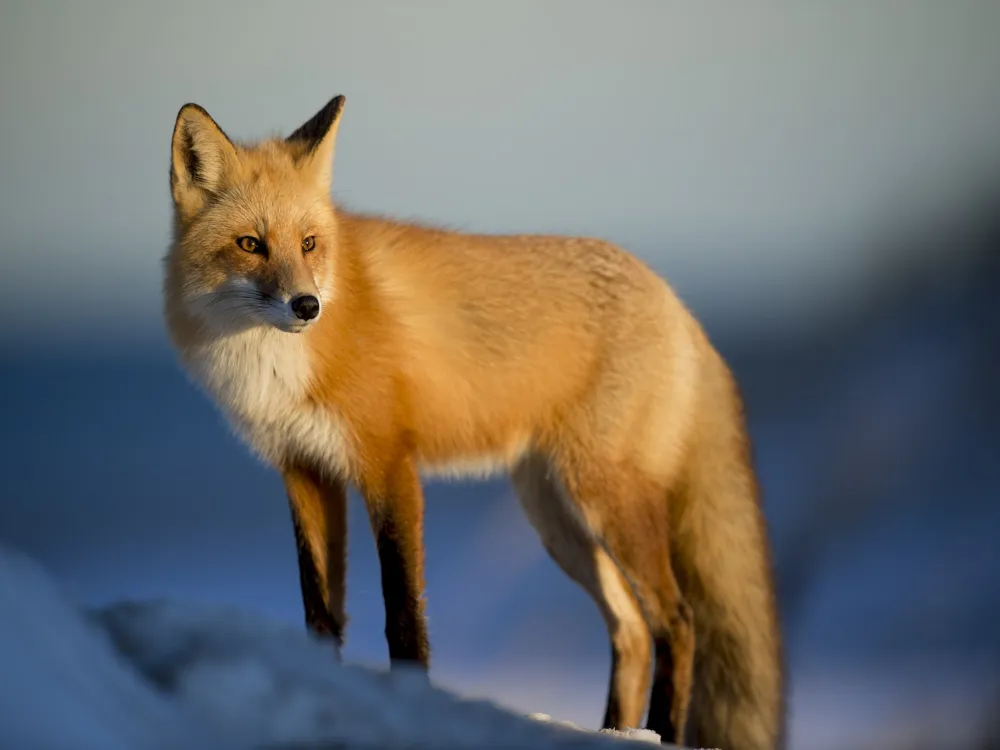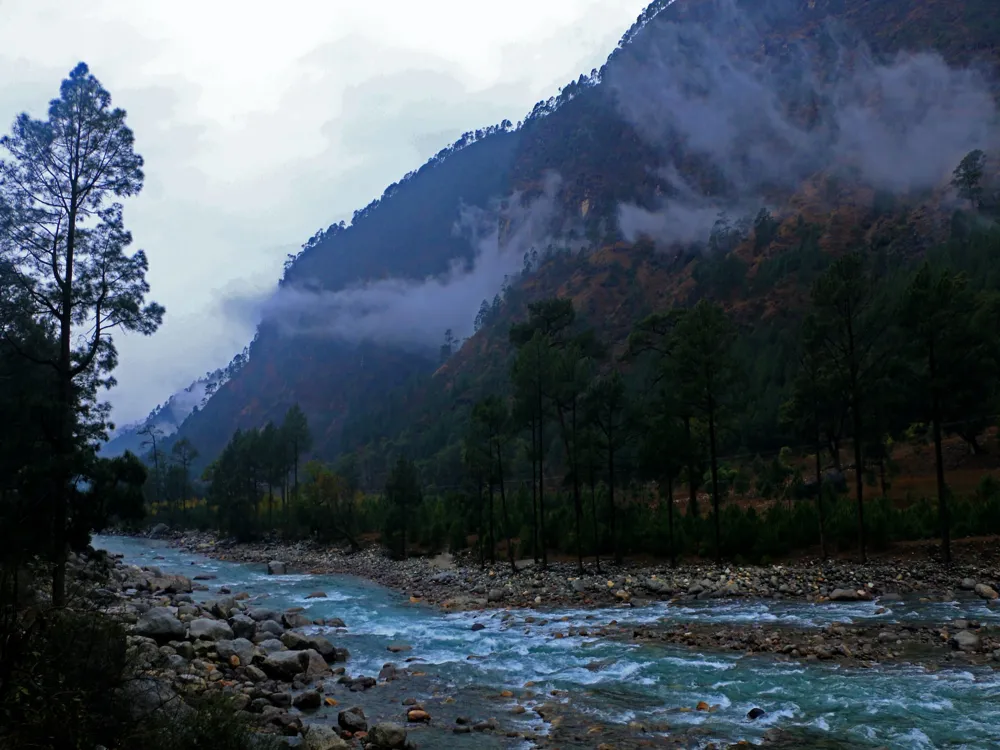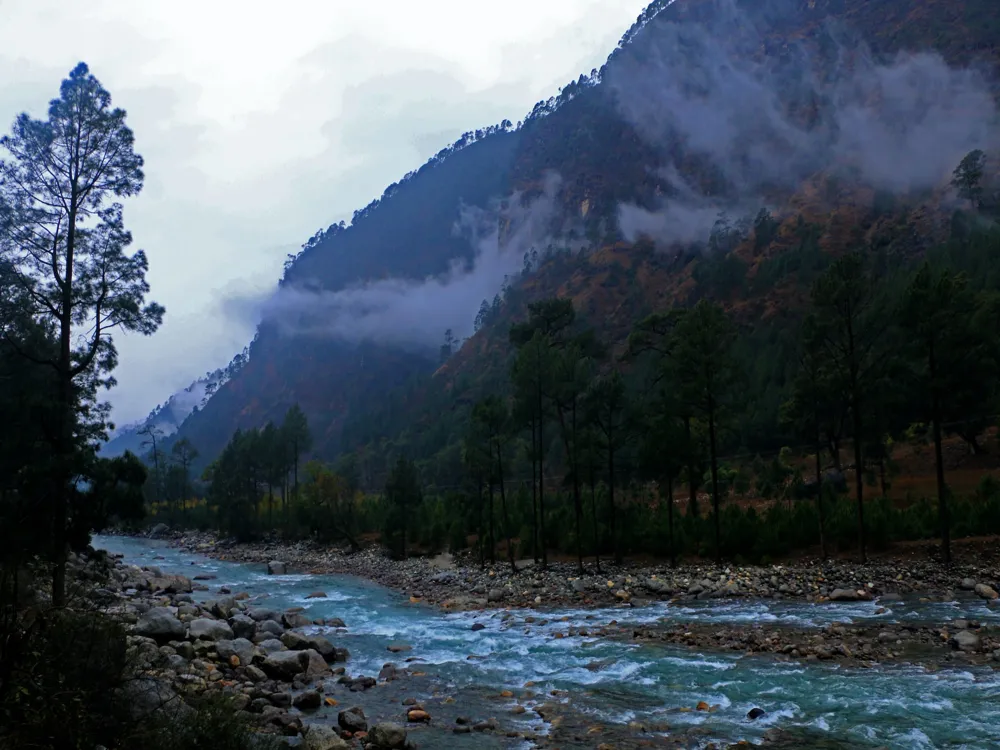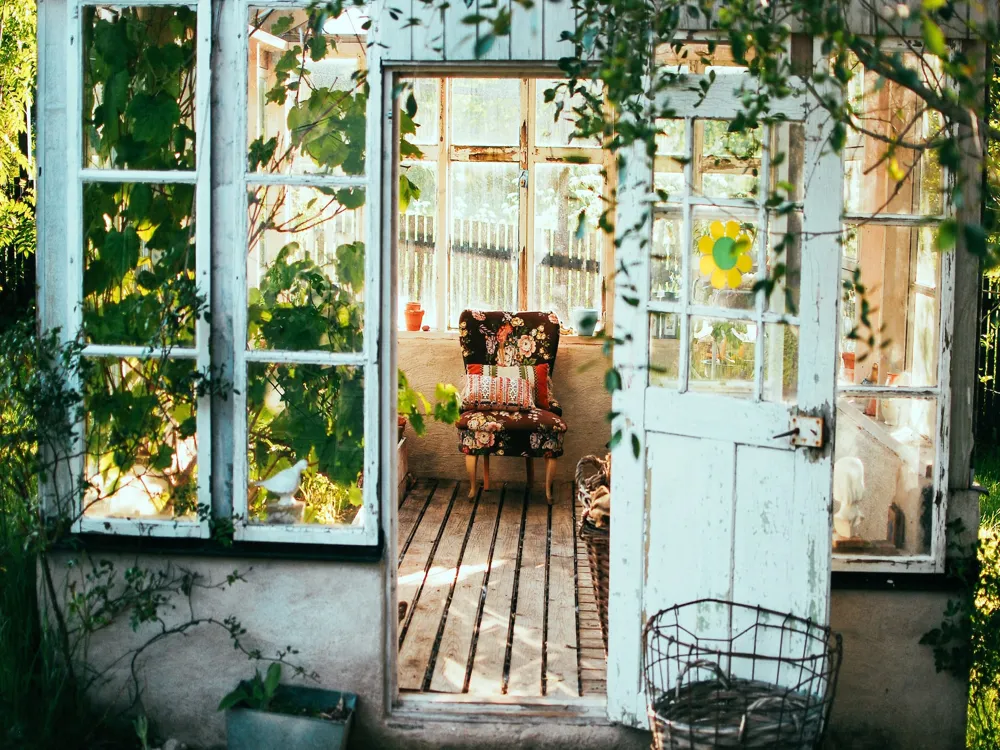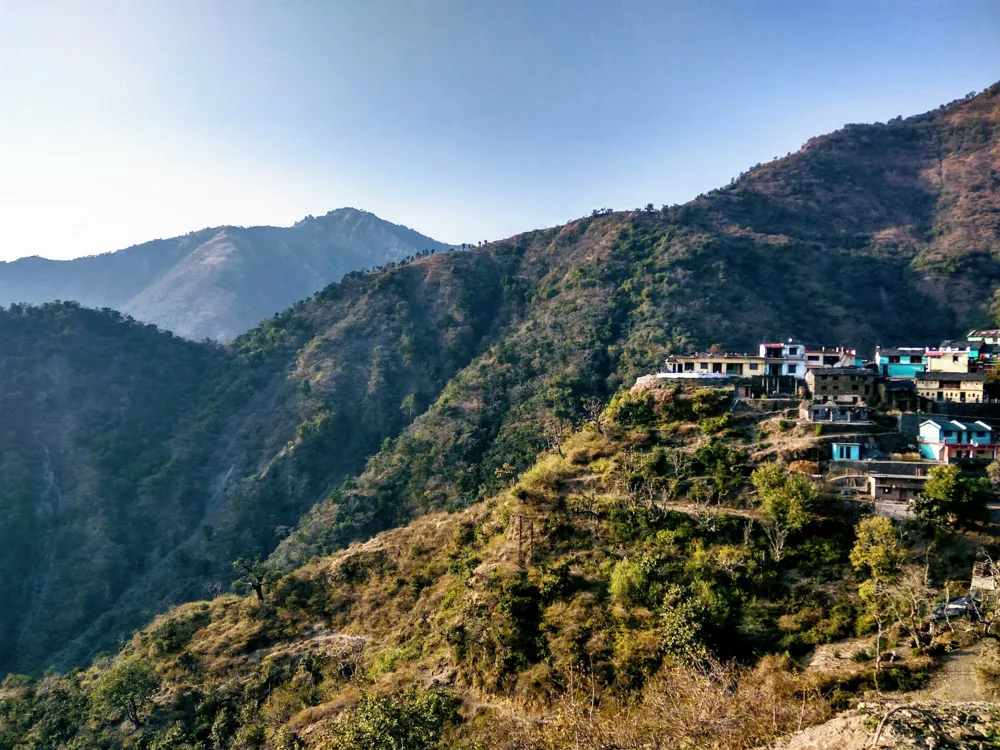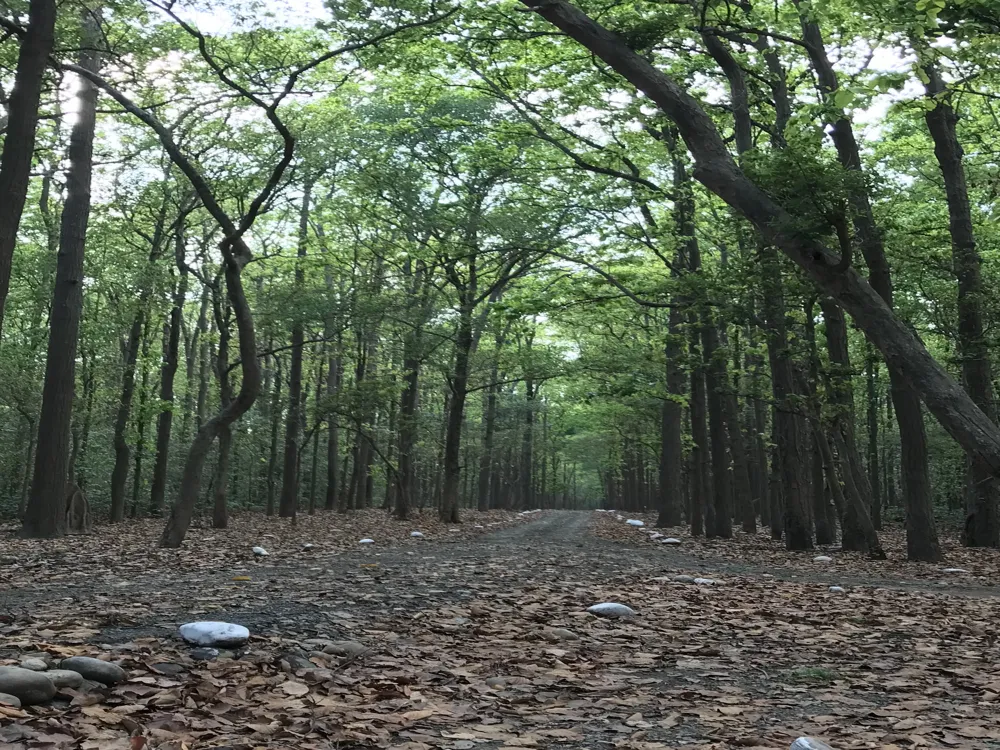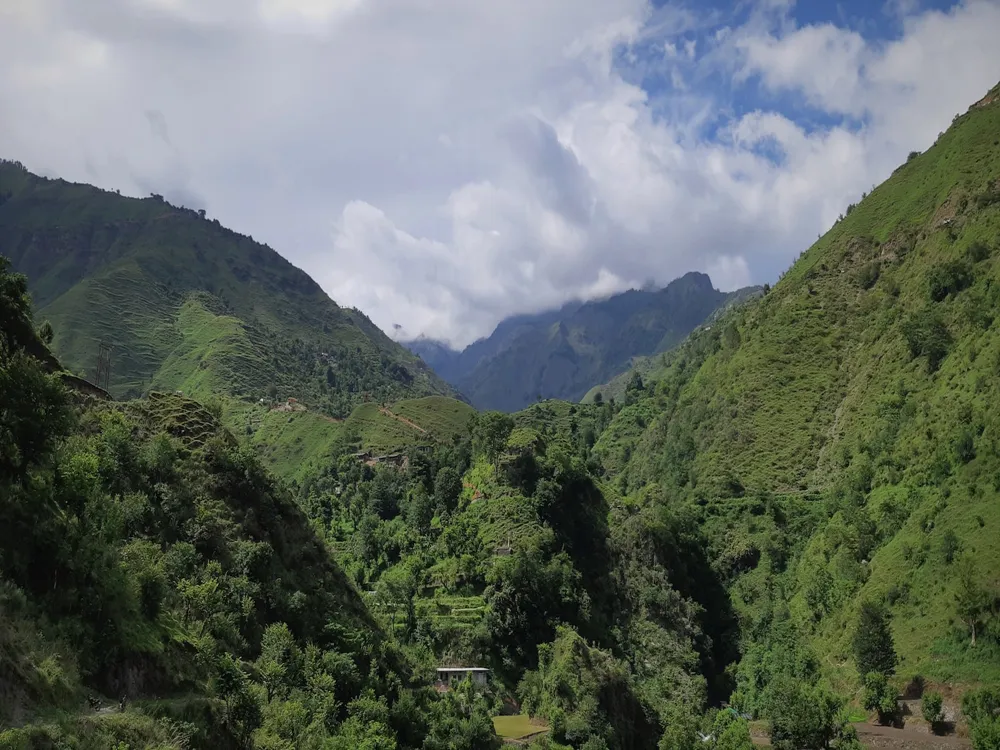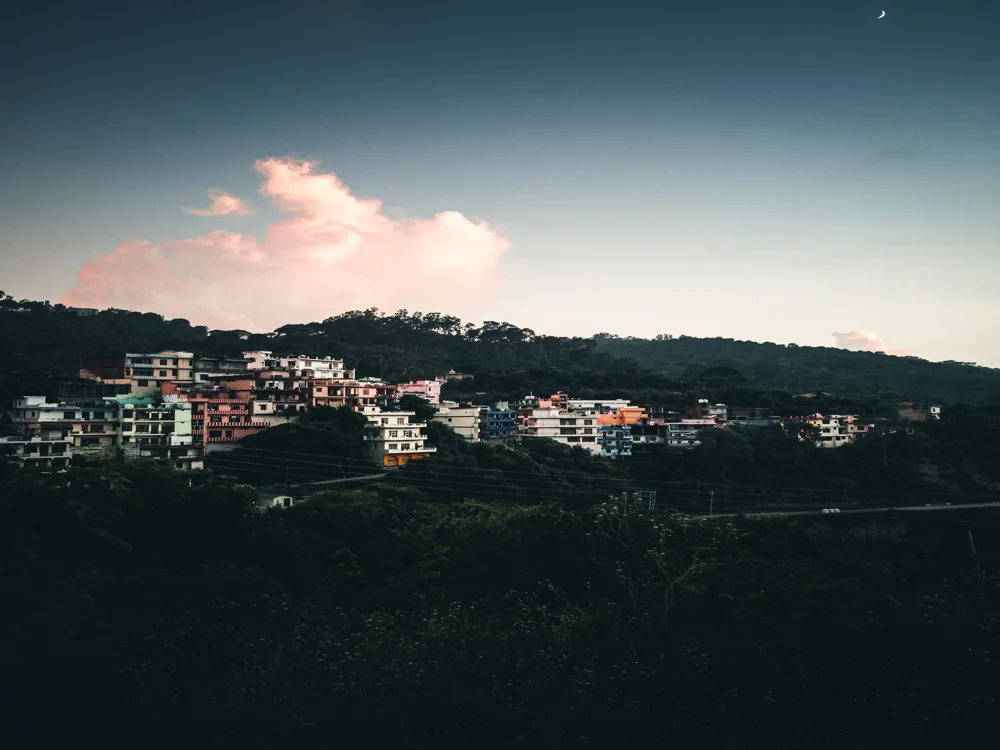Nestled in the quaint hill station of Mussoorie, in the heart of Uttarakhand, lies the serene Benog Wildlife Sanctuary. This sanctuary is a part of the larger Rajaji National Park and is renowned for its rich flora and fauna. Spanning an area of approximately 339 hectares, it is a haven for nature enthusiasts and wildlife lovers. The sanctuary is situated at an altitude of 2,250 meters above sea level, offering breathtaking views of the surrounding Himalayan peaks and the Doon Valley. The Benog Wildlife Sanctuary is a significant part of the mountain ecosystem. It is home to a diverse range of wildlife, including rare and endangered species. The sanctuary is known for its avian population, with species like the Red-Billed Blue Magpie, Mountain Quail, and White Capped Water Redstart spotted frequently. Mammals such as the Himalayan Goat, Panther, Leopard, and Bear also find refuge in this sanctuary. The dense forests of Oak, Deodar, and Pine provide the perfect habitat for these species. The sanctuary's rich biodiversity is complemented by its picturesque landscape, featuring lush greenery, meandering streams, and rugged trails. The presence of ancient temples within its bounds adds a touch of spiritual serenity, making it a unique blend of natural beauty and cultural heritage. The Benog Wildlife Sanctuary is not just a wildlife haven; it's a paradise for trekkers, bird watchers, and anyone who seeks solace in nature's lap. The Benog Wildlife Sanctuary, though primarily known for its natural wonders, also boasts a unique architectural style that blends seamlessly with its environment. The architecture here is not about grand buildings or structures, but rather about how the various elements within the sanctuary are designed to coexist harmoniously with nature. One of the striking features of the sanctuary's architecture is the use of local materials in the construction of its facilities. Structures such as the forest rest houses, watchtowers, and small bridges are primarily made from locally sourced wood and stone, reflecting a commitment to sustainability and ecological balance. These materials not only blend aesthetically with the surroundings but also have a minimal environmental impact. The design of the rest houses and other structures in Benog Wildlife Sanctuary is simple yet functional, offering basic amenities while ensuring that the natural landscape remains the primary focus. Large windows and open spaces are a common feature, allowing visitors to immerse themselves in the beauty of the surrounding forest and wildlife. The use of traditional construction techniques further adds to the rustic charm of these buildings. The paths and trails within the sanctuary are carefully laid out to minimize disturbance to the wildlife and vegetation. They meander through the dense forests, leading to vantage points that offer panoramic views of the area. The thoughtful design of these trails ensures that visitors can explore the sanctuary without causing harm to its delicate ecosystem. In summary, the architecture of Benog Wildlife Sanctuary is an exemplary model of eco-friendly and sustainable design. It demonstrates how human structures can coexist with nature, enhancing the beauty of the natural environment while providing a safe and enjoyable experience for visitors. When visiting Benog Wildlife Sanctuary, it's crucial to maintain a safe distance from wildlife and avoid disturbing their natural habitats. Refrain from feeding the animals or attempting to interact with them, as this can disrupt their natural behavior. Wear comfortable and weather-appropriate clothing. Opt for layers that can be added or removed as needed. Since the sanctuary has rugged terrain, sturdy footwear is essential for safe trekking. To protect the sanctuary's ecosystem, always stay on the marked trails. Venturing off the beaten path can lead to unintended damage to flora and fauna. Pack essentials like water, snacks, a first-aid kit, and a map of the sanctuary. Always carry a garbage bag to bring back any trash, as littering disrupts the natural environment. While photography is encouraged, it's important to do so responsibly. Avoid using flash photography around wildlife, as it can startle them. Benog Wildlife Sanctuary is accessible from Mussoorie, which is well-connected by road to major cities like Dehradun, Delhi, and others. The nearest airport is the Jolly Grant Airport in Dehradun, approximately 60 kilometers away. Visitors can hire taxis or take buses from Dehradun to Mussoorie. Once in Mussoorie, the sanctuary can be reached by a short drive or trek, depending on the visitor's preference. Local transport options like taxis and buses are available, but many tourists prefer to trek to the sanctuary to enjoy the scenic beauty of the route. Read More:Overview of Benog Wildlife Sanctuary in Mussoorie, Uttarakhand
Architecture of Benog Wildlife Sanctuary
Tips When Visiting Benog Wildlife Sanctuary
Respecting Wildlife
Dress Appropriately
Stay on Designated Trails
Carry Essentials
Photography Etiquette
How To Reach Benog Wildlife Sanctuary
Benog Wildlife Sanctuary
Mussoorie
Uttarakhand
₹ 3,500 onwards
View mussoorie Packages
Weather :
Tags : Wildlife
Timings : All days of the week: 7:00 AM - 5:00 PM
Time Required : 1-2 hrs
Entry Fee : No entry fee
Planning a Trip? Ask Your Question
Mussoorie Travel Packages
View All Packages For Mussoorie
Top Hotel Collections for Mussoorie

Private Pool

Luxury Hotels

5-Star Hotels

Pet Friendly
Top Hotels Near Mussoorie
Other Top Ranking Places In Mussoorie
View All Places To Visit In mussoorie
View mussoorie Packages
Weather :
Tags : Wildlife
Timings : All days of the week: 7:00 AM - 5:00 PM
Time Required : 1-2 hrs
Entry Fee : No entry fee
Planning a Trip? Ask Your Question
Mussoorie Travel Packages
View All Packages For Mussoorie
Top Hotel Collections for Mussoorie

Private Pool

Luxury Hotels

5-Star Hotels

Pet Friendly







